How local groups are fighting to revive the world's largest inland fishery
Battling climate change and dam constructions, communities along the Mekong are finding ways to adapt and protect one of the world’s richest rivers.

This is an editorially independent piece produced as part of our Roots of Change series.
Close to 1,200 different fish species dart beneath the waters of the Mekong River. Yet as continuous threats are damaging its ecosystem and threatening the well-being of communities that live on and around the river, local groups are finding ways to adapt.
The Mekong runs through six Asian countries before hitting the South China Sea. As the world’s largest inland fishery, over 40 million people are reliant on the river as a source of sustenance and income.
But hydropower dam construction, mostly toward the head of the river in China; unsustainable sand mining and fishing practices; habitat destruction; and warming waters and heavier precipitation as a result of climate change are depleting fish numbers and affecting the communities reliant on them.
“The water and water quality of the Mekong River is key to agricultural production, fisheries production, and food security for the Mekong countries,” explained Steven Olive, mission director for the regional development mission for Asia at the U.S. Agency for International Development.
Not wanting to wait for external solutions that may never come, local groups dotted along the 4,350 kilometer (2,700-mile) river, such as that of Pho Sai district in Thailand’s Ubon Ratchathani province, are trying to find solutions themselves that would both restore the river and safeguard their incomes.
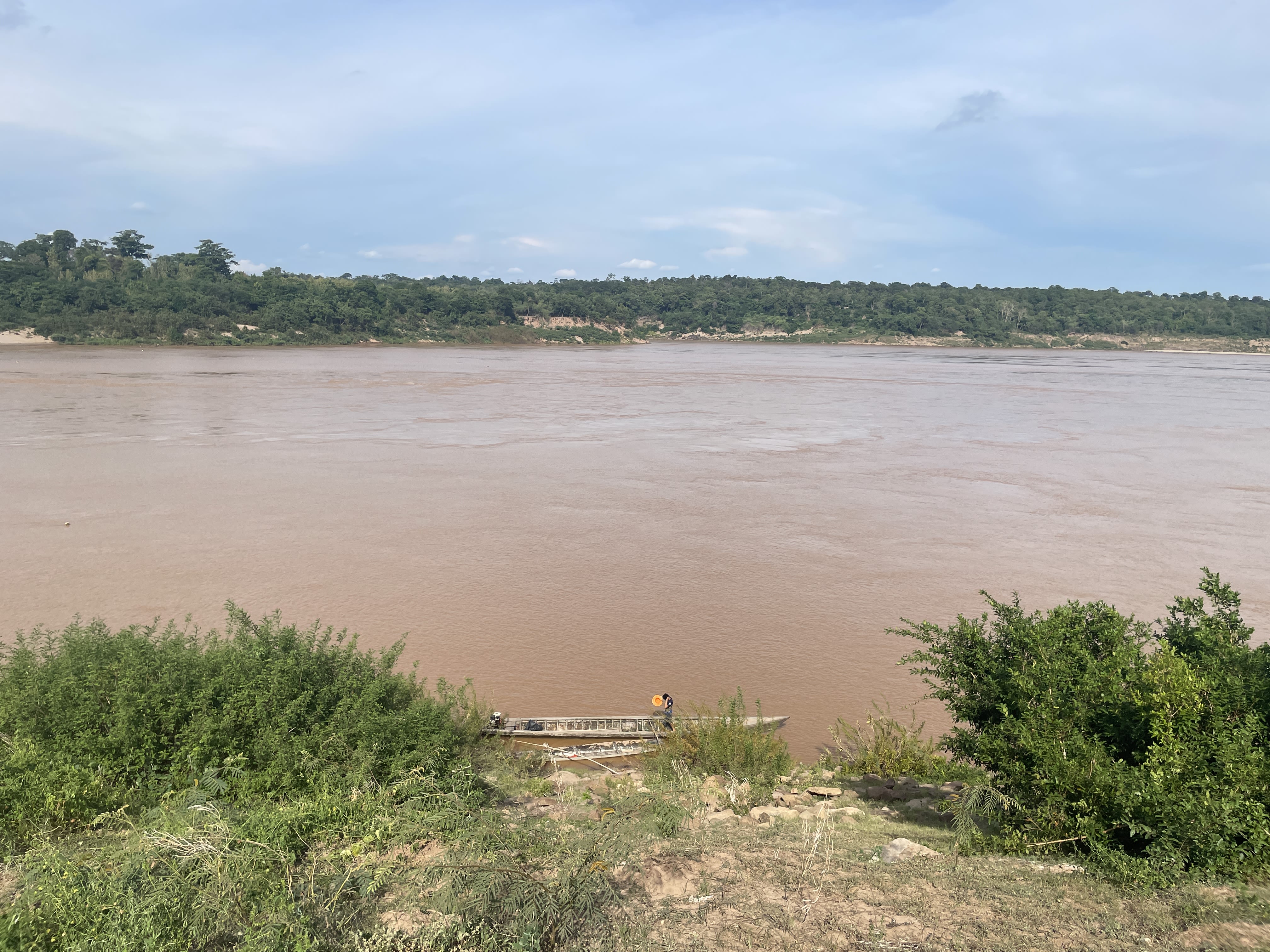
The Mekong River, which starts in the Tibetan Plateau before flowing through Myanmar, acts as a border between Thailand and Laos as seen here, then continues down through Cambodia and Vietnam.
The Mekong River, which starts in the Tibetan Plateau before flowing through Myanmar, acts as a border between Thailand and Laos as seen here, then continues down through Cambodia and Vietnam.
The threats to the Mekong and its inhabitants
Located as far east as Thailand goes where only a 56-meter (61-yard) stretch of river separates the country from its neighbors in Laos, Pho Sai is a community of generational fisherfolk.
Record-breaking Mekong giant catfish, carps, and minnows could be plucked from the murky brown waters by each family in their designated part of the river and quickly sold. However, over the past decade, numerous threats have meant community members cast out their nets for days only for a few fish rather than dozens to make their way in.
“I used to go out fishing every day. Nowadays it’s really not worth the investment because there are no fish,” said Sorn Champadok, a local fisherwoman and community representative.
Sorn Champadok, a Thai fisherwoman and community representative, discusses the negative impacts of dam construction on the Mekong River.
Champadok used to spend every day out in her wooden fishing boat and earn 100,000 baht (about $2,700) a month. Now, she only fishes once every 10 days out of tradition but loses money. One net, she told Devex, used to trap 10-20 kilograms (22-44 pounds) of fish in a day, but now she can leave a net out for a week only to catch a single fish. Champadok blames 80% of the changes in fish catches on hydropower dam construction and 20% on changing weather patterns, and believes all communities along the Mekong are set to suffer.
“In the future, not only my village, but all the people by the Mekong River will be victims.”
— Sorn Champadok, a local fisherwoman and community representative of Pho Sai
Hydropower dams produce electricity by storing vast quantities of river water in a reservoir then releasing it via a turbine that triggers a generator. Over 160 hydropower dams — the majority of which are in China — use the Mekong’s waters, with nearly 300 more planned for development. Research shows their construction prevents water from flowing, stopping fish from migrating, and limiting access to the rich nutrients thought to be behind the river’s uniquely large species.
The giant stingray and Mekong giant catfish hold the top two places for world’s largest freshwater fish. They are among 19% of fish species at risk in the river of extinction as a result of these simultaneous threats.
Champadok has been forced to find other work, choosing to cultivate rubber from a plantation she’s started. “When there was no season anymore we had to adapt and find another way to make a living,” she said. But then comes climate change, which is slowly killing off the trees by diminishing water sources in times of drought while the rice her husband and son plant can’t always withstand the flooding.
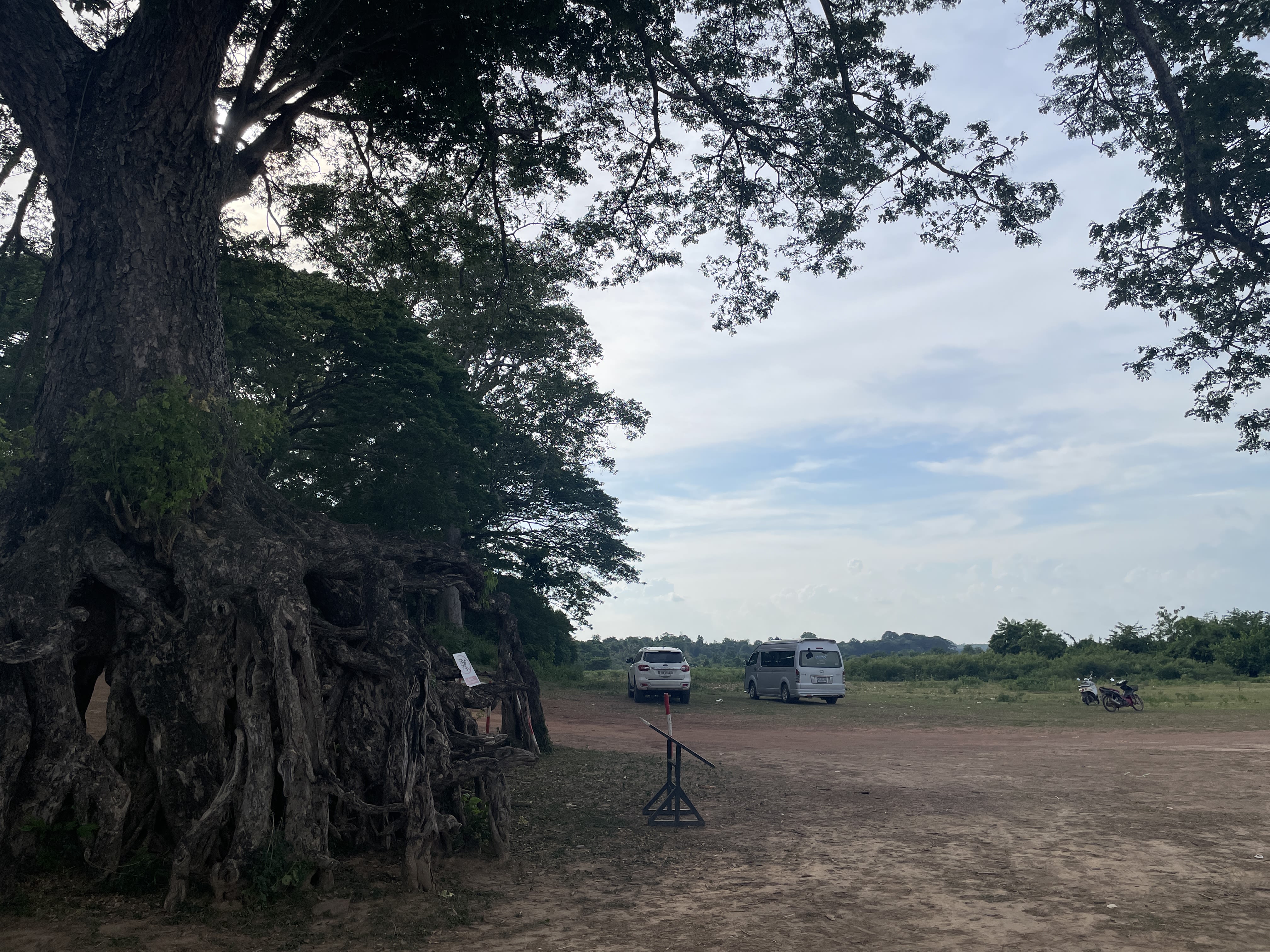
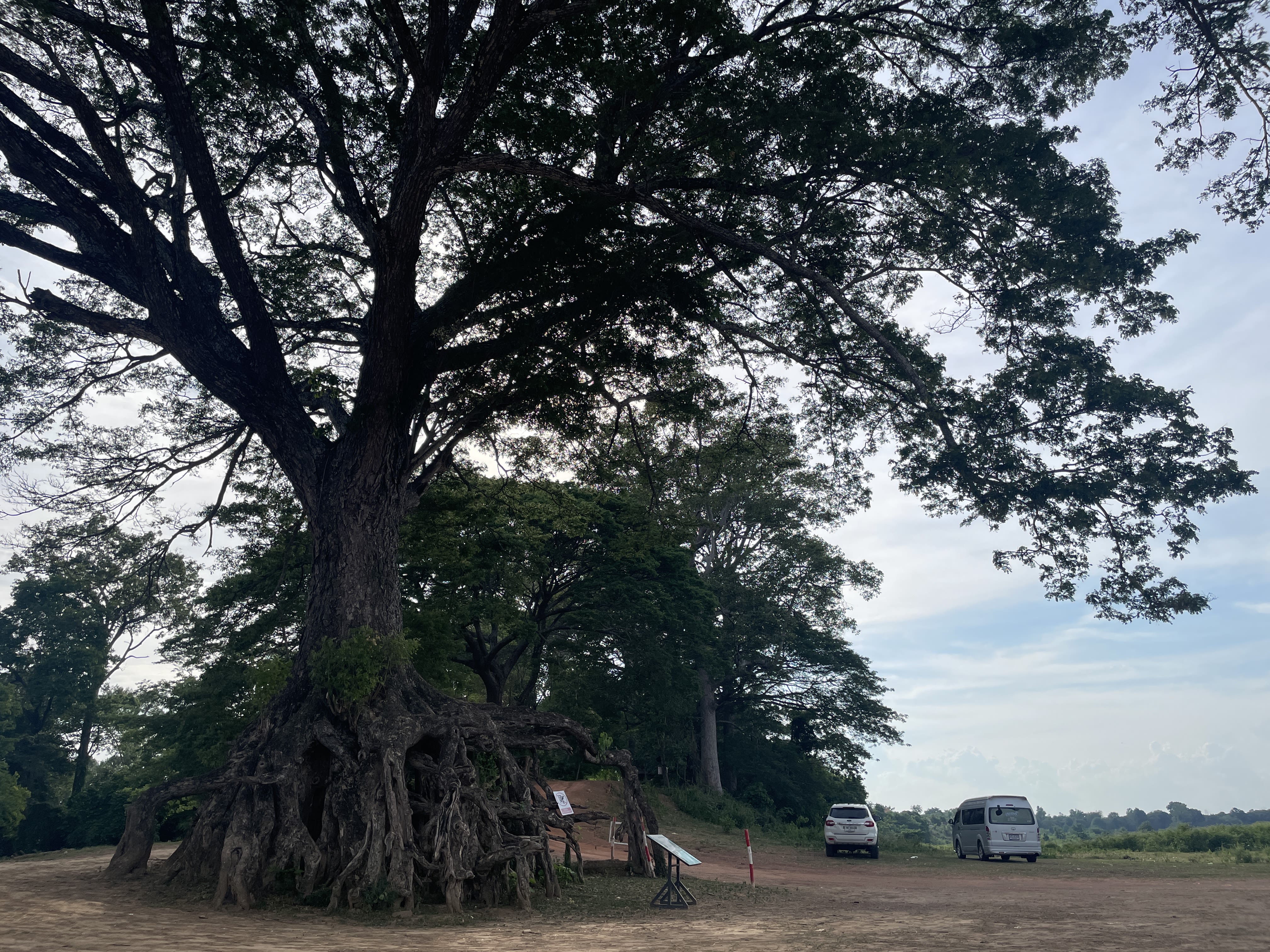
Thailand, like many of the Mekong countries, is experiencing more frequent and severe floods contrasted with higher temperatures that tip the region into 50 degrees Celsius heat. “We're seeing more extreme events, longer droughts, and sometimes heavier rains than before that communities have to adapt to,” USAID’s Olive explained.
Along the dusty banks of the Mekong, these changes can mean prime spots for cultivating crops, such as beans, corn, and eggplant, are no longer viable. It used to be that during high tide, the Mekong waters left fields wet, irrigated, and covered with a natural fertilizer, creating a “perfect, giant setting for robust agricultural production,” according to Brian Eyler, Southeast Asia program director at the foreign affairs think tank Stimson Center. However, the unpredictability of floods and not knowing when the dam water upstream will be released makes it hard to predict when to plant and when to harvest.
It’s a constant struggle for local people, said Tanakit Sayjai, a member of the provincial council of Ubon Ratchathani, who explained that many young people are opting to leave the province, known for its natural beauty, in search of work elsewhere.
Tanakit Sayjai, a member of the provincial council of Ubon Ratchathani, reflects on the potential benefits of focusing on tourism development in the region.
“Those communities that used to entirely rely on fishing have nearly emptied out and you no longer see fishing along the course of the river,” Eyler said.
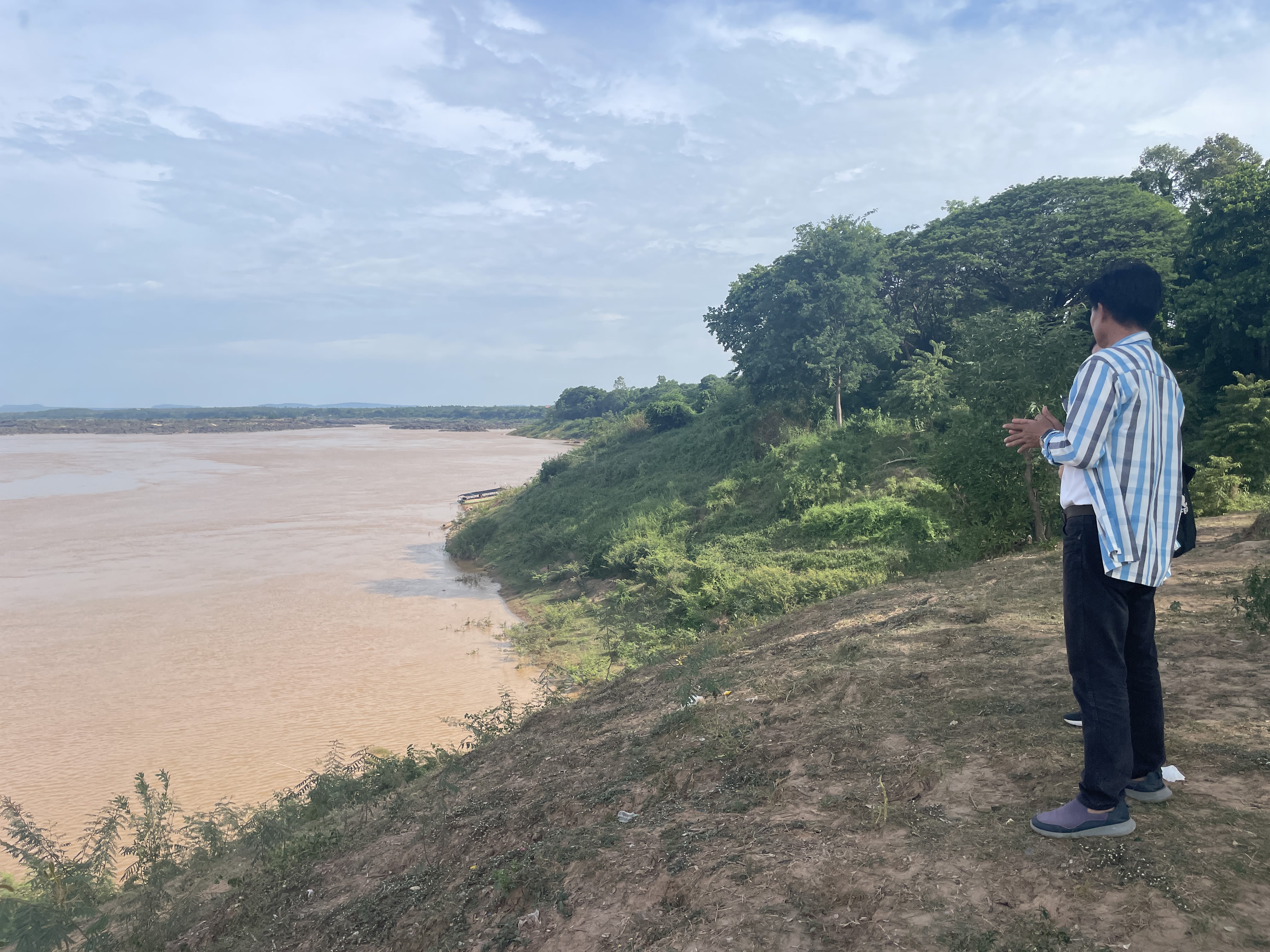
Locally led adaptation
But refusing to simply accept the situation, Champadok is part of a collective of local community members that has tried, albeit unsuccessfully, to file lawsuits to stop further dam construction. Aware there’s likely little they can do to stop what happens higher up the river in places such as China, they’re also trying to find their own solutions, seeking out alternative income-generating activities and finding ways to regenerate the river.
The region is now marketing itself as a sustainable tourism destination, Sayjai said, with the aim of generating an income that way. “I believe that tourism will boost the agricultural sector, providing jobs and income for our people,” he said. It’s hoped that events such as the first Pride parade, held on a Friday night in the village’s main street, will attract more tourists to an area not typically on Thailand’s top tourist destinations lists.
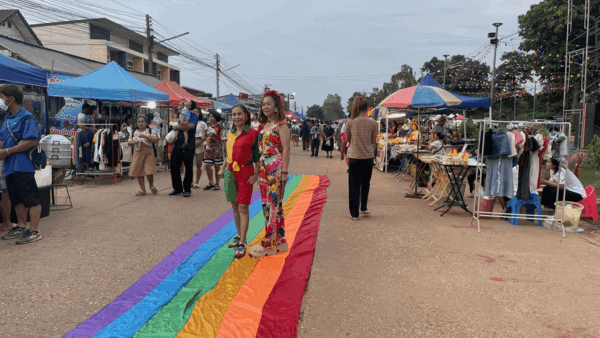
The first Pride event in Pho Sai district in Ubon Ratchathani province in Thailand took place on June 21. Local authorities hope that this annual event will eventually attract more tourists to the area.
The first Pride event in Pho Sai district in Ubon Ratchathani province in Thailand took place on June 21. Local authorities hope that this annual event will eventually attract more tourists to the area.
Locals are also learning how to make garments from cotton, a crop that is much more hardy and able to grow on the banks of the Mekong despite the changes, Sayjai said.
But some are unwilling to give up on the traditional fishing practices that have sustained this area for so long. With the support of the WWF, fisherfolk from Thailand and Laos have established six fish conservation zones since 2018; areas of about 190 rai (30 hectares or about 74 acres) where community patrols deter fishing.
This allows the fish stocks to bloom once more, explained Yanyong Sricharoen, head of WWF Thailand’s freshwater unit. Since they first established the zones, fisherfolk have reported seeing fish they hadn’t seen for years and in bigger sizes, he shared. “They can catch more fish and they have more fish for consumption and income.”
The head of WWF Thailand’s freshwater unit, Yanyong Sricharoen, talks about the impact of the fish conservation zone.
The hope, Sricharoen shared, is that the zones will mean fish stocks recover and locals will be able to cast out their nets once more and bring home a promising haul.
The need for regional action
Elsewhere along the Mekong, local communities are raising awareness of the impacts of dams and climate change and advocating for more protection of the river and its ecosystem.

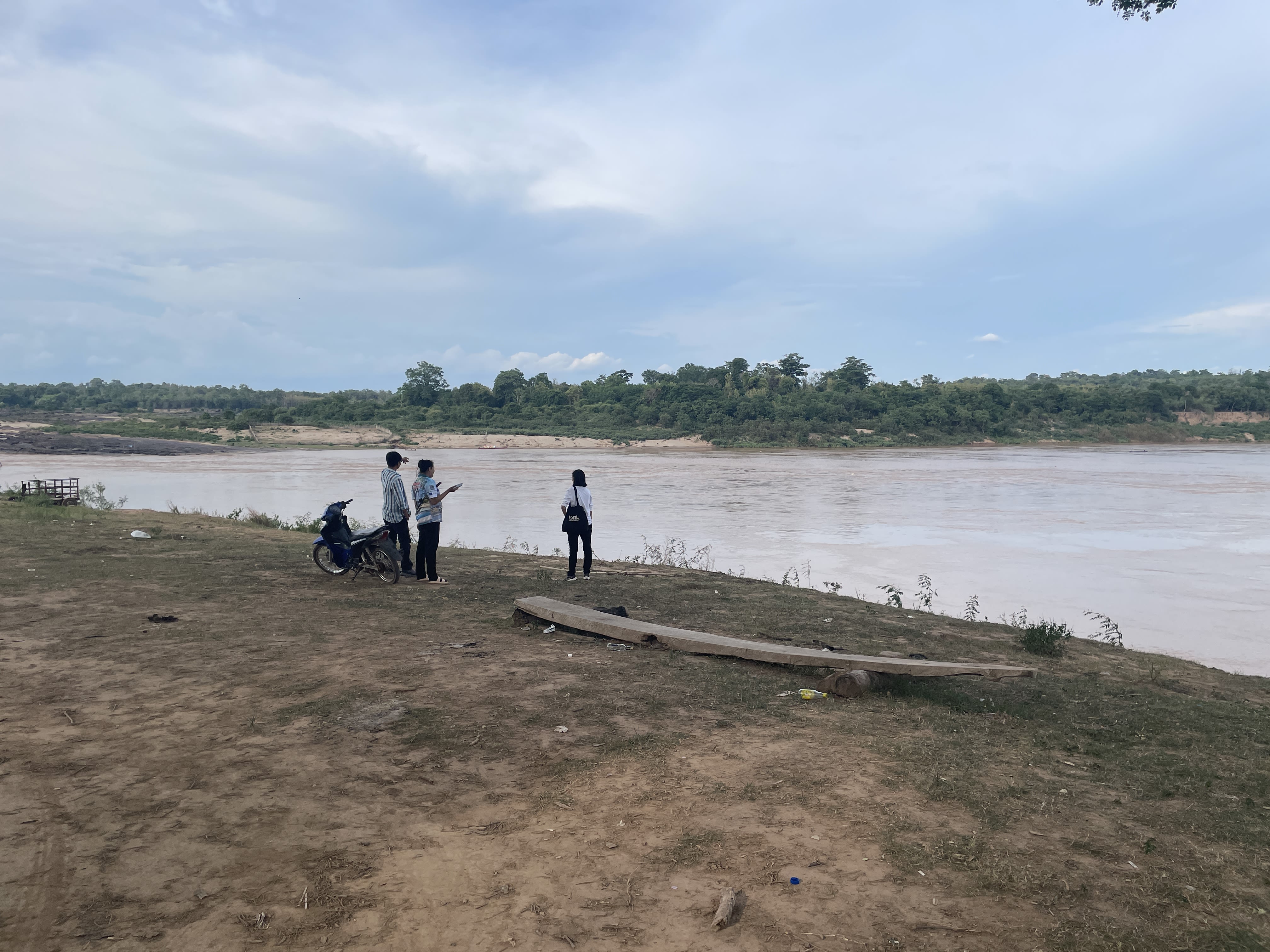

The Rak Chiang Khan conservation group in the north of Thailand is pushing for the humanitarian and environmental impacts of hydropower dams to be included in feasibility studies. In Savannakhet province in Laos, communities are refurbishing a flood gate and canal system affected by the fluctuating water levels. In Vietnam, farmers are adapting their fields so that they can work with the flood water and produce aquaculture instead of rice. And in Cambodia, communities are breeding fish in captivity, releasing them back into the Tonle Sap Lake, which is the region’s largest freshwater lake and part of the Mekong River system.
While localized initiatives like these make a difference, Teerapong Pomun, director of the Mekong Community Institute, believes civil society must be better supported to go beyond community-level initiatives to regional-level change.
The problem, however, is a lack of financing and difficulty in communicating across borders, cultures, and contexts, he shared. “We lack capacity, budget … It's not easy because of the different social contexts in each country.”
That hasn’t stopped some CSOs from attempting to collaborate across borders. ComNet is an NGO working to support the Mekong people in documenting the loss of fish, plants, and earnings along the Mekong and has seen success in convening government authorities around the issue. The Mekong People’s Forum, which includes members from Cambodia, Thailand, and Vietnam, has long petitioned for governments to take action and see the river as a shared resource.
Despite their efforts, communities continue to suffer because CSO voices aren’t always considered at decision-making levels, said Suriyan Vichitlekarn, executive director of the Mekong Institute, an intergovernmental organization focused on conducting training, research, and policy dialogues.
Stimson Center’s Eyler said community networks and CSOs need to be supported with resources as they are the people who understand the situation best.
Recognizing this, several international organizations are trying to assist. DAI and USAID have worked with rural communities in Laos, Thailand, and Vietnam to research the potential loss of money as a result of climate change. The United Nations Development Programme has been working to improve data on integrated water resources management in vulnerable areas of the river in Laos and Cambodia. USAID and WWF launched The Hug Mekong Network in 2023, designed to strengthen relationships among public, private, and government agencies when conserving the Mekong’s resources; and both USAID and the Stimson Center monitor the river and provide alerts via social media and through civil society networks, warning of when floods and droughts might be coming.

USAID/RDMA Deputy Mission Director Linda McElroy and Thai government representatives and CSO partners open the Home Hug Mekong Center and its library in Nong Khai.
USAID/RDMA Deputy Mission Director Linda McElroy and Thai government representatives and CSO partners open the Home Hug Mekong Center and its library in Nong Khai.
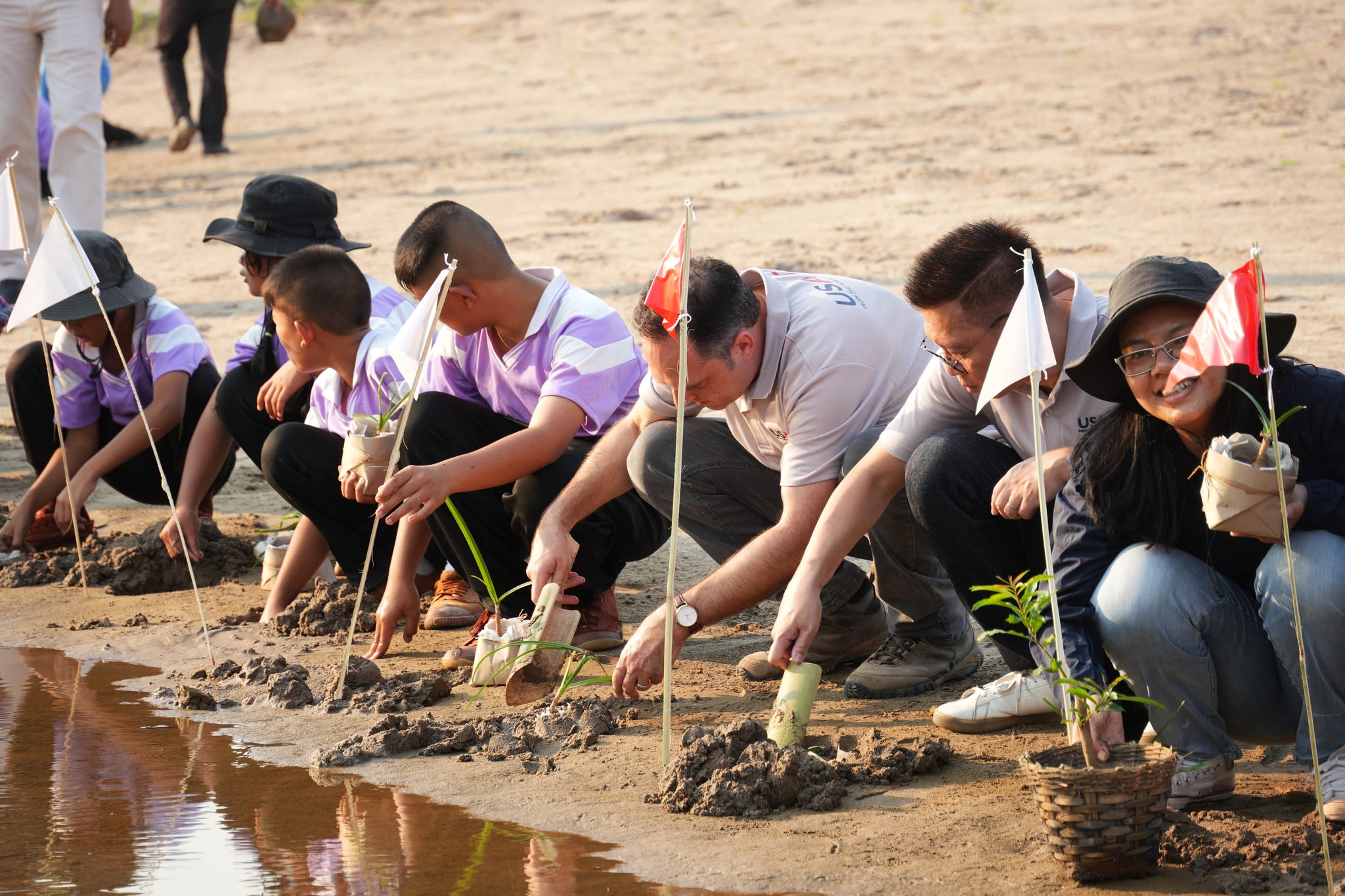
Representatives from USAID, the Royal Thai Government, intergovernmental agencies, WWF, CSO partners, and students from local communities plant the young Krai plant, or willow-leaved water croton, to restore the Mekong ecosystem.
Representatives from USAID, the Royal Thai Government, intergovernmental agencies, WWF, CSO partners, and students from local communities plant the young Krai plant, or willow-leaved water croton, to restore the Mekong ecosystem.
“What we have found is to really utilize the organizations that already exist,” Olive said, adding that it is a USAID priority to support access to more data so decision-makers are well-informed about the situation on the Mekong.
Looking ahead, Vichitlekarn believes, however, that more expertise, resources, knowledge, and collaboration is needed to ensure long-term protection of the Mekong. “We cannot stop the problem that is climate change, but we can be more resilient, we can be more prepared, we can respond, and we can contribute less to our gas emissions,” he said, adding that while there will always be a level of development on the Mekong, it's the responsibility of those in and around it to ensure its condition is not worsened.
“We cannot stop the problem that is climate change, but we can be more resilient, we can be more prepared, we can respond, and we can contribute less to our gas emissions.”
— Suriyan Vichitlekarn, executive director, Mekong Institute
In the meantime, families such as Champadok’s will continue to contend with their changing environment in the hopes that human-made construction eases up rather than exacerbating the effects of climate change and that they will one day be able to live off the water, as their ancestors had done for generations.
Photos by Asian Development Bank / CC BY-NC-ND, Shutterstock, USAID, and Rebecca L. Root.
Produced by Patricia Esguerra.

